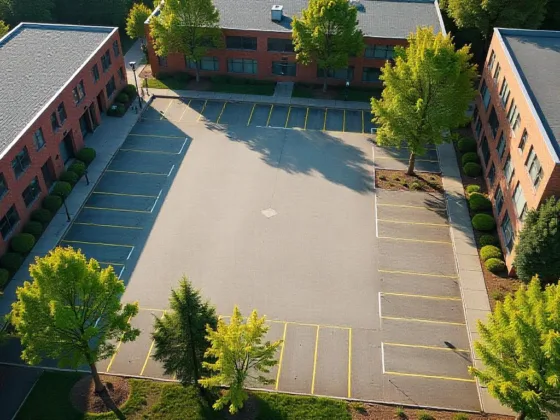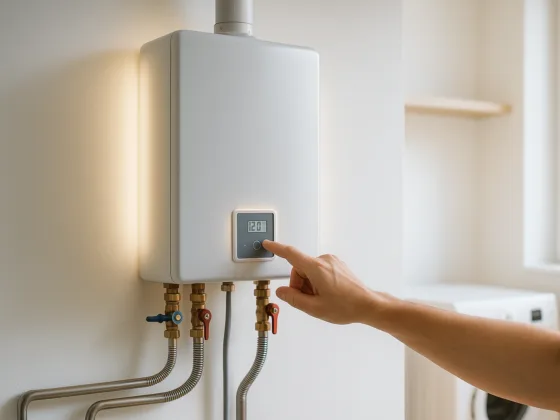Table of Contents Show
In today’s world, where technology, climate change, and changing lifestyles are constantly reshaping how we live, it’s more important than ever to future-proof your home. A home that can adapt to changing needs and new innovations not only makes life more convenient and sustainable but also increases its value and lowers long-term costs. Here are some key strategies to keep your home relevant and efficient for years to come.
1. Smart Home Integration
Smart home technology is transforming our lives by making them more convenient and secure. With a smart home system, we can automate daily tasks and reduce energy consumption. Here are the key components to consider when planning your own smart home setup:
Smart Thermostats
Devices like Nest or Ecobee fall under this category. They have the ability to learn your heating and cooling preferences over time, allowing them to automatically adjust the temperature according to your schedule. By doing so, these thermostats help you save on energy costs without requiring any effort on your part.
Smart Lighting
This includes features such as motion sensors that activate lights when someone enters a room, as well as programmable lights that can dim or brighten at specific times throughout the day. These functionalities not only contribute to energy savings but also eliminate the need for manually switching off lights.
Smart Security Systems
These systems provide an added layer of protection for your home. With smart doorbells, you can see who’s at your front door even if you’re not physically present. Cameras enable you to monitor your property remotely via smartphone, while smart locks allow you to lock or unlock doors from anywhere. This ensures continuous safety for your home.
Voice and App Controls
To streamline control over all these devices, voice assistants like Amazon Alexa or Google Home come into play. They enable hands-free operation by responding to voice commands. Additionally, dedicated mobile applications offer another avenue for managing your smart home devices conveniently from your phone—regardless of where you are located. This feature proves particularly beneficial for individuals with mobility challenges who may find it difficult to navigate their homes independently.
2. Energy Efficiency and Sustainability
Energy efficiency and sustainability are key. Lower energy use benefits the Earth. It also lowers bills over time. Consider a few smart upgrades for your home.
Solar Panels
Solar panels can be a great choice. The cost to buy them can be high at first. Over time, solar power greatly cuts power bills. Solar power also helps the environment. It is a clean energy source.
ENERGY STAR Appliances
Energy-smart appliances are another good idea. Look for appliances with the ENERGY STAR label. These use less water and power. This can save you money each month.
Insulation and Windows
Good insulation and windows help a lot. Proper insulation keeps your home warm in winter. It also keeps it cool in summer. Double-glazed windows also help. They reduce the need for heating and cooling. This saves on energy costs.
Rainwater Systems
Rainwater systems can also save water. These systems collect rainwater. You can use it to water your yard. This lowers your water bill. It also helps save water.
3. Flexible and Adaptable Spaces
Homes must adapt to life’s changes. Design spaces to be flexible for all needs. Family needs change over time. Work-from-home is now common.
Multi-purpose rooms offer great value
A guest room can be more than just for guests. It easily becomes a home office or workout space. This makes the most of available space. Maximize each room’s use.
Open floor plans create choices
These designs let you change spaces as needed. Walls do not limit room use. Rearrange furniture to change a room’s purpose. This offers great freedom.
Aging-in-place features add long-term value
Wider doorways help people move easily. Non-slip floors reduce fall risks. Walk-in showers remove barriers. These features support all ages and abilities. This ensures the home remains usable for years. Everyone can access the space safely.
4. Durable and Low-Maintenance Materials
Choosing durable and low-maintenance materials cuts costs and boosts home strength. These materials resist wear, reducing future repairs.
- For outdoor spaces: Consider composite decking. It beats wood because it lasts longer and needs less work to keep it looking good.
- For kitchens: Quartz countertops are great. They fight stains and hold up better than granite, making them a practical choice. Quartz is also more durable than marble.
- For roofing: Think about metal roofs. Metal roofs outlast asphalt shingles and can withstand severe weather conditions such as heavy snow or high winds without any issues.
Using these tough materials protects your home and saves money over time.
5. Preparedness for Climate Change and Natural Disasters
Homes must be ready for climate change and disasters. Weather is less easy to guess. Houses need to be strong for what may come. This means new builds must be tough. Old homes need updates to handle new risks.
Flood Resilience
- Foundations should fight floods.
- Homes can be built higher.
- Sump pumps remove water fast.
These steps keep water out.
Storm-Resistant Features
- Windows must hold up in storms.
- Special glass can stop flying things.
This protects from strong winds. Hurricanes won’t break windows as easy.
Backup Power Solutions
Power may go out, so have backup.
- Generators make power when the grid fails.
- Solar panels store power in batteries.
Lights and heat stay on during outages.
6. Smart Storage Solutions
Homes often lack enough storage. Adding smart storage keeps spaces neat. Consider these ideas for your home.
Built-in Solutions
- Built-in shelves save space. These blend with the walls, so the room feels bigger.
- Think about a bookshelf that fits around a door.
- Also, think about seats with hidden storage. These maximize space without clutter.
Vertical Storage
- Vertical storage uses wall space. Shelves and hooks lift items off the floor. This makes rooms feel more open.
- In a kitchen, hang pots and pans overhead. This frees up cabinet space.
- Use tall, thin shelves in bathrooms for supplies.
Under-Stair Storage
- Under-stair storage uses wasted areas. This spot works well for many things.
- Add drawers for shoes near the entrance.
- Install shelves for books or games.
- A small office or reading nook can even fit there. This makes the most of every inch in the house.
7. High-Speed Internet and Connectivity
High-speed internet is now a must-have, as more people work and play online. A strong internet setup is key for the future.
Upgrade to Fiber-Optic Internet
First, think about upgrading to fiber-optic internet. Fiber offers much faster and more dependable speeds. This means smoother video calls and quicker downloads.
Set Up Mesh Wi-Fi
Next, set up mesh Wi-Fi to get rid of dead zones in bigger homes. Mesh systems spread the internet signal evenly. Everyone can enjoy a strong connection, no matter where they are.
Add Ethernet Ports
Finally, add Ethernet ports for stable connections. Ethernet gives smart devices and home offices a wired connection. Wired connections are more reliable than wireless. They help avoid disruptions during important tasks.
Conclusion
Future-proofing your home is now a must. Smart tech, energy savings, and flexible spaces protect your investment. Using strong materials and preparing for weather events add value. Make these changes to enjoy a safer, more useful home for years to come.
Infographic
Infographic provided by Dunaway Brothers, one of the top North Aurora drywall carpenters
FAQs
Future-proofing your home refers to making design and technology choices that ensure your living space remains functional, comfortable, and relevant in the face of changing lifestyles, advancements in technology, and environmental considerations.
Future-proofing your home helps to increase its longevity, enhances energy efficiency, reduces maintenance costs, and can boost property value. It prepares your home for evolving needs and technological advancements, making it a wise investment.
Important features to consider include energy-efficient appliances, smart home technology, flexible living spaces, sustainable building materials, and robust internet connectivity. These elements can adapt to future needs and technologies.
You can start by installing smart thermostats, lighting systems, security cameras, and home assistants. These technologies can be integrated into your home and are easily upgradable, allowing you to keep pace with advancements.
Yes, incorporating sustainable practices such as solar panels, energy-efficient insulation, and water-saving fixtures contributes to future-proofing. These practices not only benefit the environment but also reduce long-term utility costs.
Design your home with flexibility in mind, such as using movable walls or multi-purpose rooms. Additionally, keep future renovations in mind and opt for timeless design elements that can easily accommodate changing needs over time.










